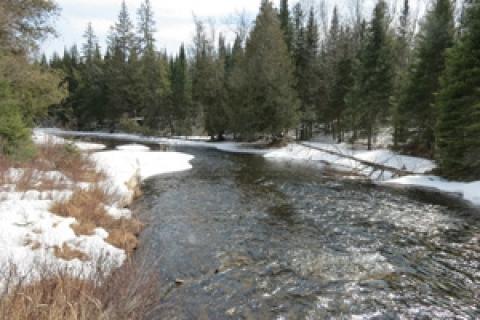
 In Ontario, come November, all but the die-hard anglers quit fly fishing for the year — for a number of reasons. First, many trout waters close at the end of September. Second, it’s hunting season. And third, and perhaps most important, those waters that are open hold cold weather-related risks, both to your equipment and to yourself.
In Ontario, come November, all but the die-hard anglers quit fly fishing for the year — for a number of reasons. First, many trout waters close at the end of September. Second, it’s hunting season. And third, and perhaps most important, those waters that are open hold cold weather-related risks, both to your equipment and to yourself.
Surprisingly, these limitations generally don’t deter the die-hards. Those guys know that the fishing can be great and the waters virtually devoid of other anglers. But they also knows a few precautions are in order.
The smart angler chooses his or her days wisely. They also know that to fish days when the guides on your rod freeze you need to be prepared to deal with the conditions.
One of the smartest precautions is to fish with a partner when conditions get rough. Wading into or walking the banks of the chill waters of November is simply much safer if you’ve got back up to help you out of a jam.
Though obvious, dressing for conditions cannot be understated either — if you are not prepared hypothermia or frostbite can result. At the very least, you’ll find yourself shivering back at the car just when the fishing gets good.
Dressing for cold weather means good insulated waders, winter underwear, warm socks, suitable insulated layers of upper body clothing, a good cold weather cap and gloves — some prefer fingerless. Moreover, a smart angler will keep a change of clothing in the car for the way home. You’re fishing; you’re going to get wet.
Food and a warm thermos should be part of these preparations. Simply put, you need to keep the furnace stoked.
When it comes to wading, it’s best to do it sparingly, if at all. Obviously, the same safe-wading precautions apply as always. Never get out over your knees in hard currents, use a wading staff to probe the next step, take small steps, wade sideways to current pressure, etc.
Having said that, I’d add one more thing — winter is not the time to take chances wading waters you don’t know. If you are fishing new waters, and you must wade, be extremely cautious as a uncertain step into unknown waters could result a dangerous, frigid dunking.
Also, though it should go without saying, don’t walk on ice shelves forming on the water’s edge. They can be unsafe, especially when combined with flowing water.
Rod guides, as previously mentioned, can provide real problems in that they ice up as water collects on them during retrieve. Commercial products are available to prevent this but anglers have their own solutions too. Among them is non-stick cooking spray, WD-40 or lip balm. Almost all will need to be reapplied. The frequency of this depends on how often you are retrieving line through the guides. Another way to de-ice guides is to immerse them underwater. What you don’t do is break off ice with your fingers as this can damage the rod and guides. (Don’t ask me how I know.)
In any case, at the end of a trip where guides were lubricated, it’s best to clean your line, as some lubricants can degrade it.
Lastly, be aware of the signs of hypothermia in you and your fishing buddy and take them seriously. Slurring of words, confusion, shivering, clumsiness, bad decision-making, low energy — essentially actions that could be mistaken for drunkenness — are things to take very seriously as they could signal the onset of hypothermia, which can be deadly. Know how to prevent, recognize and treat it.
Winter fishing can be fantastic, but it can also be dangerous if you approach it without the respect it deserves. So be safe and cautious. You don’t want to miss the opener in spring.
- 3481 views

